Dealing with pee problems is one of the most frustrating issues for pet owners. It causes massive property damage, and the smell can make your living situation unbearable. I’ve tried all kinds of solutions, such as litter attractants, scents, calming devices, etc.
This article is the accumulation of that research and finally landing on something that worked for us. However, you should know that there is no quick fix to this problem. Animals start urinating in undesirable places for a number of reasons, and you’re still going to need to do some detective work! Let’s get started.
Getting to the root of the problem
While undesirable urination is the symptom, the problem is rooted much more deeply. In order to understand what’s going on, you’ll need to evaluate your current situation and your cat.
However, there are a few main causes which you can likely use to get to the bottom of it all. Here are some potential causes and solutions a cat not using the litter box.
Have there been any big changes in your life recently?
Cats don’t always deal with change well. In many cases, they can become anxious, or even downright terrified by things that they don’t understand, such as a move, or a new animal in the home. If you’ve experienced any of the following recently, then this section is a good bet for you.
- Recently moved house
- A new person has moved into the home
- You’ve gotten a new animal
- You’ve changed your cat’s routine in some way
- You’ve changed your own routine in some way
- You have new, loud close neighbors (such as in an apartment)
If any of the above situations is true for you, then I’d start with anxiety as a reason for your cat’s new behavior.
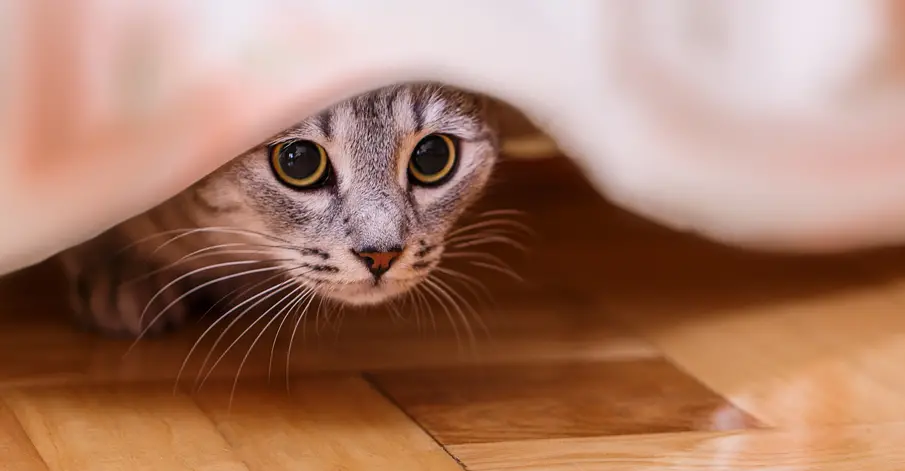
After our move, our cat was a nervous wreck. He began peeing in spaces where he felt safe. Unfortunately for us, this meant our carpeted hallway.
For cats who are peeing in closed off areas, such as closets, or abandoned corners of the house, this seems a likely cause and should be explored.
A cat who keeps peeing on carpet and rugs in these areas is likely too afraid to use their litter box where it’s at currently.
What should you do about it?
Move the litter box
My first step here would be to move the litter box to a new location. Your cat has already showed you where he or she wants to pee, try moving it somewhere nearby.
Our cat was relieving himself in a quiet hallway, so I cleared out a linen closet there and made it his new litter box space.
Now, when there’s too much activity on the other side of the house, he makes his way to that litter box and does his business in peace.
You could also try placing it inside a cabinet, or in an unused closet in a spare room, where it will be very quiet and they can feel safe.
Many cats are weird about using the litter box because it puts them in a vulnerable position. They want to feel safe while using it, so make them feel safe.
Add a second litter box
If you’ve recently gotten a new cat, then you might also consider adding a second litter box. It’s possible that your cats are fighting over who the current one belongs to. If that’s the case, then the loser may find a new place to relieve themselves on the carpet instead.
Adding additional litter boxes makes it so that nobody has to fight over the current resources. If you’ve noticed other “bullying” behavior from one cat, such as guarding food dishes or fighting over other spaces, try this.
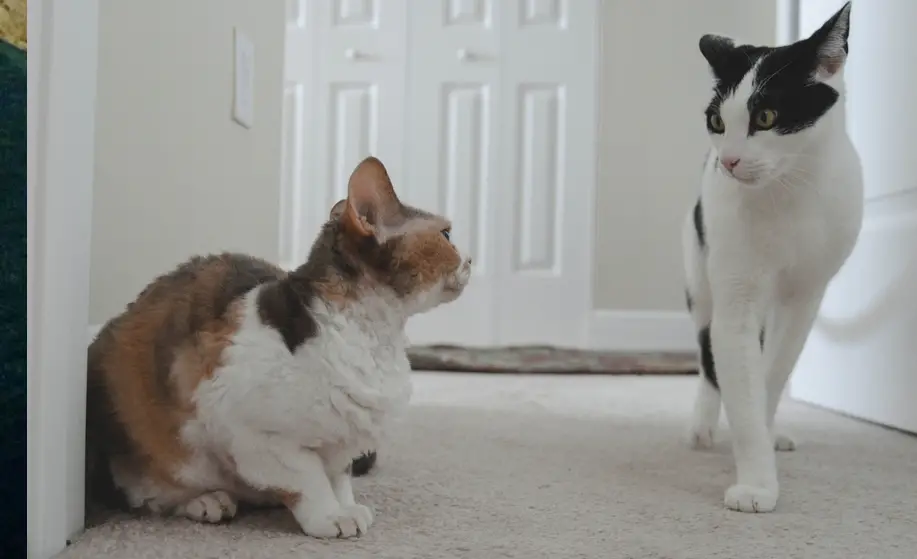
If your new cat is not using litter box, and you already have another cat, this is the most likely scenario, and I’d start here to solve your issue.
Have you changed the litter or anything about the box?
If your cat was using the box just fine but you’ve changed the litter, or even the box itself, this could be the issue as well. Cats are finicky about their litter box, and they do have their own personal preferences.
Even if you yourself have not changed it, has the manufacturer changed the litter in any way to save money without you noticing?
Cats can be very sensitive to smells or textures. The litter we were using was no longer clumping as well as it was, and I believe the change in formula had also put him off on using it.
We’ve since changed to a new litter which he likes much better. Plus, as an added bonus, it clumps better, and it’s harder for him to kick it out and make a mess.
This litter is also good for cats who do not like harder litters (such as those that have been declawed), and I’ve found they don’t track it around like the lighter corn litters either. It’s for sale at Amazon, but I have not seen it in a physical store yet.
What should you do about it?
Go back to the other litter or try a different one
If your cat was using another litter before the incidents occurred, then go back to that one! It’s possible that they dislike the new litter for some reason and switching back may fix the problem.
If the old litter is no longer available, then try to get one as close as you can, including material, consistency, and scent so that it will seem familiar to them.
Remove or add a hood to the litter box
Some cats like or don’t like the litter box hood. Removing it, or adding it, could change their behavior, but this very much depends on the cat.
In some cases, cats don’t like being confined or bumping into it, but in other cases, the cat may like the privacy.
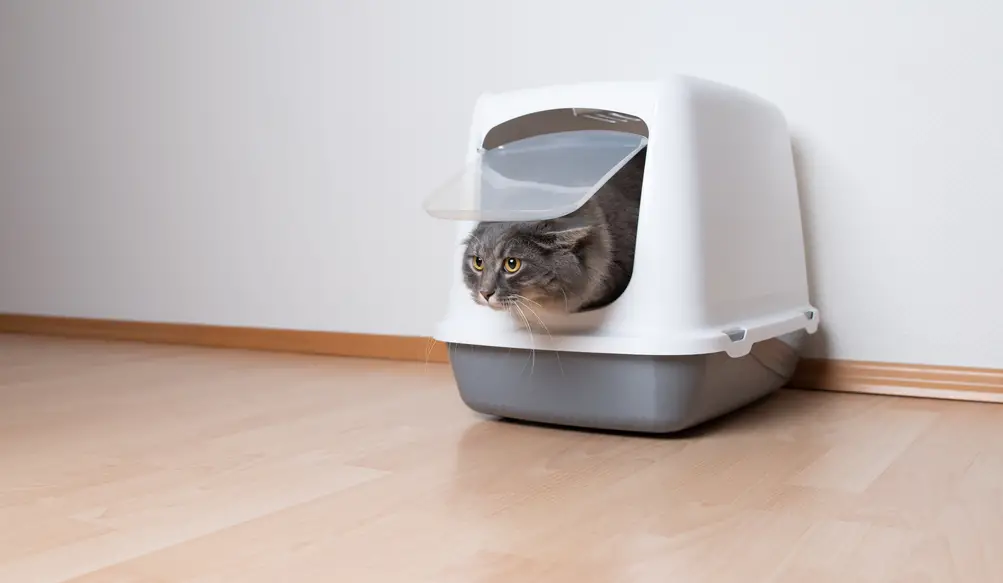
If you’ve found that your cat often “over shoots” and their piles end up on the floor, then they likely need more space to maneuver. Pull the litter box away from the wall so they can aim better. Adding a hood in this situation is probably not advisable.
While it seems like the cover would keep the poop in the box, in reality, it will likely just put them off using the box at all due to the lack of space!
Have you been keeping up with your cleaning regiment?
Many cats will simply refuse to use a box which they deem not clean enough. They may protest these conditions by peeing or pooping on something else, like a rug.
The box should be scooped every day at least, but if your cat is having issues, then you may wish to try doing it even more frequently.
What to do about it:
Scoop the box more regularly
I make it a point to try and empty the box as soon as I hear him using it, so that it will always be fresh when he needs to go. While for some, this is unrealistic, if you pay attention, then you may find that your cat is pretty regular about his bathroom habits.
Add a second box
If this is not really feasible, then adding a second box is a good solution. In fact, some cats prefer to pee in a different place than they poop!
By adding a second box, you not only make it cleaner, but you also give them the choice of two places to go. Our cat was fond of this change, and it made it easier to always have at least one box fresh and ready for him to use.
Automate the problem away
For those that work prolonged periods, a litter maid or similar automated cat box may be worth the investment. These devices will automatically scoop waste into a tiny compartment as soon as your cat finishes their business.
The box will then be ready for them whether you’re home or not. Then, you simply empty the compartment bag when it’s full.
For some cats, these are wonderful. In the 90s we had one, and our cats thought it was amazing. They’d actually sit there and watch it clean up after them!
However, I opted against it this time around, because the surface area of the litter maid is smaller than his normal box, and I was afraid he wouldn’t like it.
Does your cat have a medical ailment?
In some cases, your cat may have a medical issue which you are unaware of. If this is the case, then they may be experiencing “litter box avoidance” because of issues which make using the litter box painful to them. They then associate the litter box as the source of that pain, rather than the ailment itself.
Urinary problems in cats, particularly male ones, can be quite serious. If they have a blockage, then it can quickly lead to death if it’s not properly dealt with.
Pay attention to your cat’s behavior and if you notice any of these symptoms, then a trip to the vet is likely in order.
- Straining to urinate
- Little to no pee coming out
- Visible pain when urinating
- Blood where they have peed
What to do about it:
Head to the vet for a professional opinion
Heading to the vet is the surest way to know if there’s something wrong with your cat. They can perform tests to see if there are any abnormalities which may be causing your cat grief and making them avoid the litter box. If you can’t get to the vet in person, then there are services where you can schedule a virtual consultation to get an expert’s opinion on your cat’s condition.
Use an at home testing kit to look for abnormalities
It’s hard to tell at home, but if you can predictably get your cat to pee in the same spot, then you can use something like Monthly Monitor to test them for abnormalities in their urine.
The results are instantaneous. All you need to do is read the strip, and if anything comes up that looks abnormal, you can take the strip to the vet with you to get a head start on potential treatments.
Is it an older cat peeing on carpets?
If your cat is getting older, then litter box problems may become an issue for them. The reasons for this could be numerous, and a feline who is at an advanced age may need veterinary help with their problem.
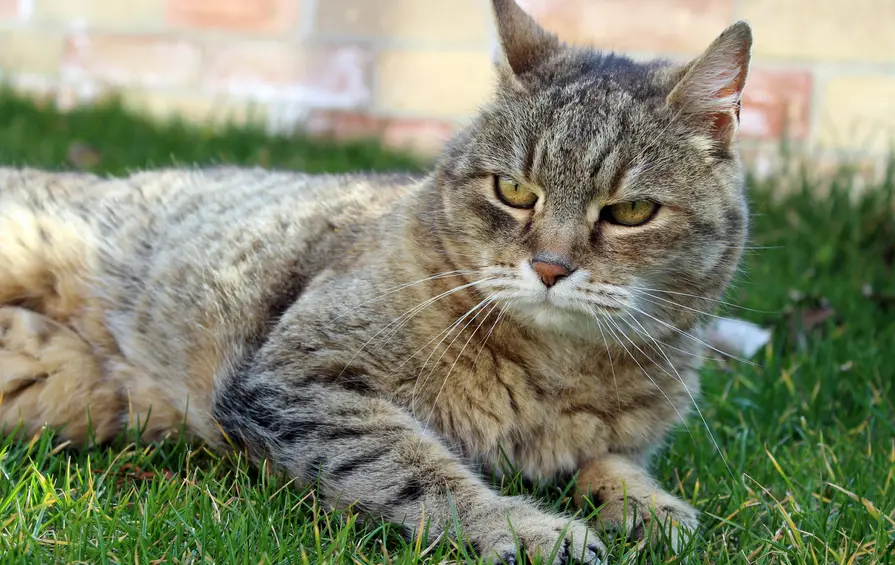
Diabetes, kidney issues, and other ailments are common. However, in some cases, these things can be treated with changes to your cat’s diet, and the issue may get better.
For an old cat peeing everywhere they can except the litter box, a trip to the vet should be the first thing on your list.
What to do about it:
Add more litter boxes
An old, sick, or arthritic cat may not have the energy to make it to a litter box downstairs. By giving them more litter boxes, you make it easier on them and yourself.
Start by putting them near where the accidents have happened and make sure to show them the new box.
Make sure nothing has changed about their litter box
Is the litter the same? Have you moved, or changed the box in any way? Is the room where the box is suddenly more noisy or chaotic?
Animals are sensitive to change, so make sure your cat is comfortable in his box.
Head to the vet for an expert opinion
For older cats, health issues become more and more of a risk. Sometimes pooping or urinating inappropriately is a call for help. This misplaced action may have to do with pain that comes from urinating or pooping, causing them to avoid the litter box entirely. Watch closely for other symptoms, and head to the vet with your findings.
- Other behavioral changes
- Sudden reduction in appetite or weight
- Lethargy or sleeping too much
- Urinating frequently
- Blood in their pee spots
- Straining to urinate or poop
- Visible pain when urinating
Confine your cat to smaller areas of the house
If you’re struggling to get the problem under control, confining them to areas of the house where they can do the least damage is a good idea. The use of baby gates, or simply shutting them out of some rooms can help.
This will also give them less ground to cover to get within range of a litter box if you suspect they are having trouble making it in time.
Has your cat started a bad habit?
For some cats, the original problem which sent them down the path of eliminating in an undesirable area may be gone, but they are still doing it. Why? In some cases, they may have just made it a habit, and if that’s the case for you then you’ll need to break them of this habit. If your cat keeps peeing in the same spot no matter what you do, then this is probably the case.
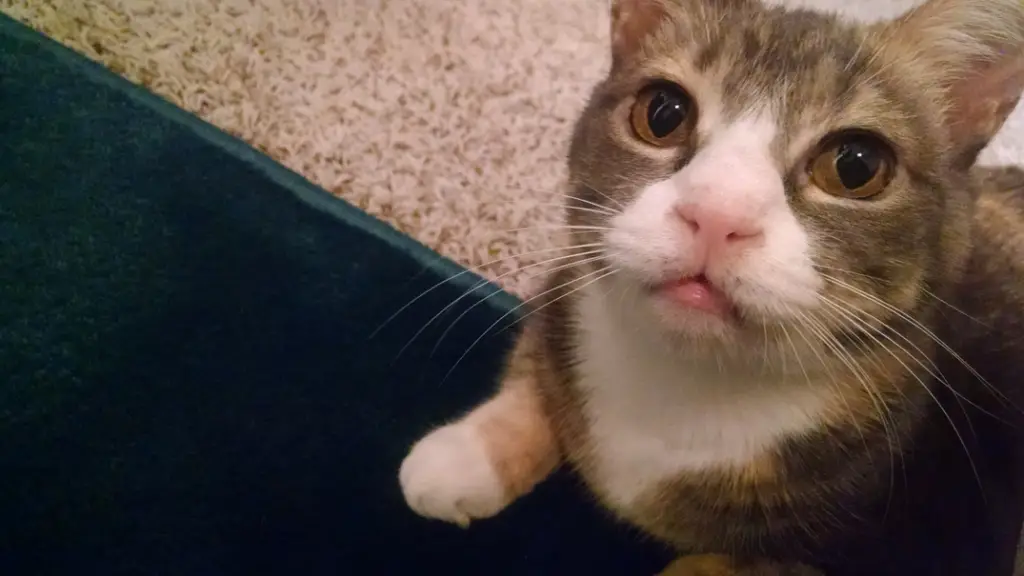
While it is very frustrating, punishing your cat is not the way to do this. They won’t understand, and it will only further confuse them, causing them to pee behind things or when you’re not around. Instead, a gentler approach is likely needed.
What to do about it:
Make the area where they go currently less attractive
Instead of punishing your cat for doing something natural, instead try to make the area where you don’t want them to go less attractive. There are many scents which cats find offensive, orange for example.
You could try spraying something which is heavily citrus scented, such as this product in the area, and see if they choose a new spot on their own.
If that doesn’t work, then simply denying them access to that area will force them to break their routine. You could move furniture around, gate off that area of the house, or even simply put something over top of the area they prefer so that they can no longer use it. A laundry basket, or anything heavy that will prevent access should work.
Another good trick is to put tin foil on the floor where they normally go. Most cats hate the sound and texture of it, and they will avoid it like the plague. It’s a cheap solution, and one that is generally pretty effective in keeping them out of or off certain areas.
Make the area where you want them to go more attractive
Your main focus should be on comfort. Make your cat’s litter box the most relaxing and luxurious area of the house. What does that mean for a cat though?
- Choose a quiet and secluded space
- Experiment with different types of litter
- Try removing or adding a litter box hood
The goal here is to get your cat to choose to use this new litter box on their own. Use what you learned in the rest of the article to make a safe space for your cat to help them establish a new routine and pattern.
They also have litter box attractants which you can try, but it did not do much for us. Changing the location of the box, and the type of litter that we were using was what really helped.
Slowly move them to a more ideal location
If your cat has become accustom to peeing in the same area, then let them. Put the litter box directly over that spot. See if they will then use the box, and if they do, then, you may slowly move the box at a rate of about an inch per day until it’s in a more convenient location. This could greatly help in establishing a new pattern for them, and have them abandon the old undesirable one.
Clean the areas where they have peed thoroughly
Have you made sure to thoroughly clean any carpets, rugs, or other surfaces where your cat has peed? This requires the use of an enzymatic cleaner which will break down the biological material in these soiled surfaces.
Any other cleaner is just covering it up, and your cat may still be detecting the scent and choosing to pee there because it smells like they should!
If you need help with getting the cat pee smell out of your house, we’ve also done an article about that, which includes a great product that worked really, really well for us.


